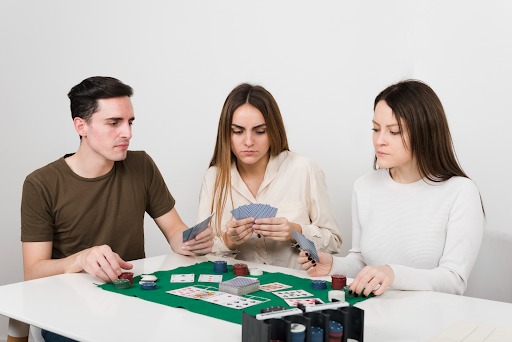In the world of card games, Teen Patti is often celebrated for its fast-paced excitement and social appeal. Players are drawn to the thrill of the bet, the tension of the showdown, and the joy of a winning hand. But beneath this surface of entertainment lies a powerful cognitive workout. While you’re focused on the pot, this classic teen patti game is subtly training your brain, building a robust framework for strategic thinking that extends far beyond the card table. You’re not just playing; you’re participating in a dynamic mental gymnasium without even realizing it.
Let’s break down how each phase of a Teen Patti hand contributes to building your strategic prowess.
The Foundation: Understanding Risk vs. Reward
At its core, strategic thinking is the ability to assess a situation, weigh potential outcomes, and make a decision that maximizes your chances of success. Teen Patti is a masterclass in this very principle.
1. Calculated Betting: Your First Step in Risk Management
Every bet in Teen Patti is a calculated risk. Before you even decide to place a “chaal” (bet), your brain rapidly processes several variables.
Evaluating Your Hand’s Potential
You start by looking at your three cards. Are they strong, like a sequence or a color, or weak, like a high card? This initial assessment is your first data point. You are instinctively calculating the probability of your hand being superior to others. A strong hand justifies a higher risk (bigger bet), while a weak hand encourages caution.
The Cost of Information
Deciding to play “seen” versus “blind” is a classic risk vs. reward dilemma. Playing blind keeps your bet low (less risk) but leaves you ignorant of your hand’s strength. Playing seen gives you valuable information (less uncertainty) but forces you to bet double the amount (more risk). This constant decision-making process trains your brain to evaluate whether the cost of acquiring information is worth the potential reward.
The Art of Observation and Reading Your Opponents
A Teen Patti game is played against other people, not just against the cards. This social dynamic is where higher-level strategic thinking comes into play. You learn to look beyond your cards and analyze the human element.
2. Decoding Betting Patterns: The Story Behind the Chips
A player’s betting pattern tells a story, and strategic thinking involves learning to read it. This skill is transferable, whether you are at a live table or analyzing opponents on a teen patti master app.
Identifying Aggressive vs. Conservative Players
Does a player raise bets aggressively on every hand? They might be a bluffer or consistently get lucky. Does another player fold quickly unless they have a monster hand? They’re likely a conservative player. Recognizing these patterns allows you to adjust your strategy, perhaps by calling an aggressive player’s bluff or folding when a cautious player suddenly raises the stakes.
Noticing Subtle Cues (Tells)
In live games, you subconsciously start picking up on “tells” – subtle physical cues that might indicate a player’s confidence or anxiety. A slight tremor in the hand, a nervous glance, or an overly confident posture can all provide information. This hones your observational skills and your ability to make decisions based on incomplete, non-verbal data.
3. The Power of the Bluff: Mastering Deception and Psychological Warfare
Bluffing is the pinnacle of strategic thinking in a Teen Patti Game. It’s the art of making your opponents believe a narrative that isn’t true.
More Than Just Lying
A successful bluff isn’t just about betting high with bad cards. It requires a deep understanding of the game state, your table image, and your opponents’ tendencies. It’s a calculated move designed to exploit the psychology of others. You learn to ask yourself: “Given how I’ve played so far, will they believe I have a strong hand now?” This trains your brain to think several steps ahead and consider your actions from another person’s perspective.
Developing Emotional Intelligence and Discipline
Strategic thinking can be easily derailed by emotion. Impulsive decisions made out of frustration or overexcitement often lead to poor outcomes. Teen Patti provides a safe environment to practice emotional regulation.
4. Managing Wins and Losses: The Key to Long-Term Success
The emotional rollercoaster of Teen Patti—the elation of a big win, the sting of a bad beat—is a powerful teacher.
Resisting “Tilting”
Losing a big pot can be frustrating. This can lead to a state known as “tilt,” where a player makes reckless bets out of anger to try and win back their losses. Learning to recognize this emotional response and sticking to your strategy regardless is a crucial form of mental discipline.
Avoiding Overconfidence
Conversely, after a big win, it’s easy to become overconfident and start playing hands you shouldn’t. Teen Patti teaches you to stay grounded, respect the element of chance, and understand that past results don’t guarantee future success. This fosters a balanced, long-term perspective essential for any strategic endeavor.
A Sharper Mind Through Play
While you’re caught up in the excitement of the game, deciding when to bet, raise, or fold, you are actively engaging in a complex mental exercise. Teen Patti compels you to manage resources (your chips), calculate probabilities, read people, and control your emotions. So, the next time you sit down for a game—whether at a physical table or through a teen patti master app—remember that you’re not just playing with cards; you’re building a sharper, more strategic mind, one hand at a time.
View our home-page for more information.




